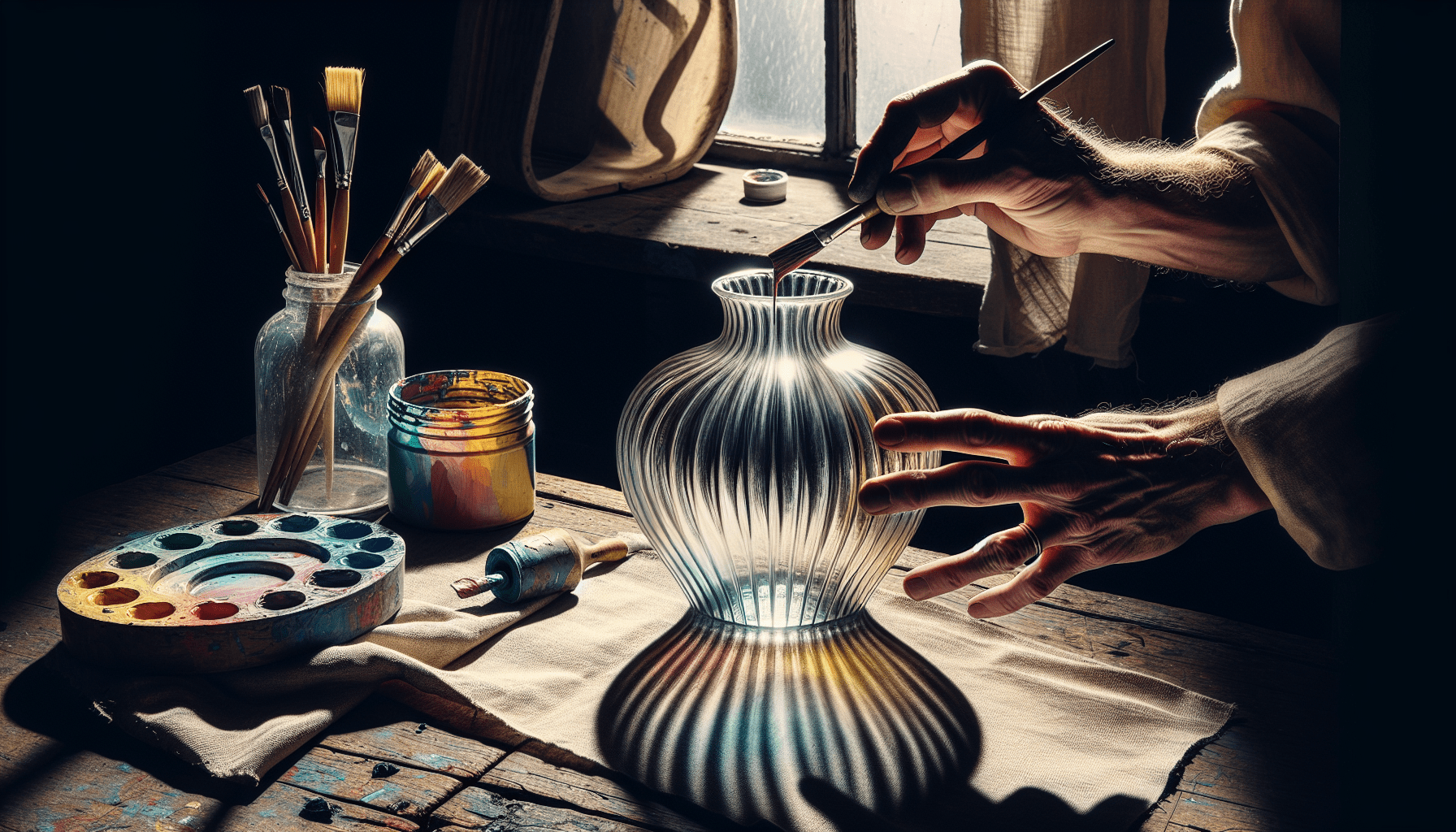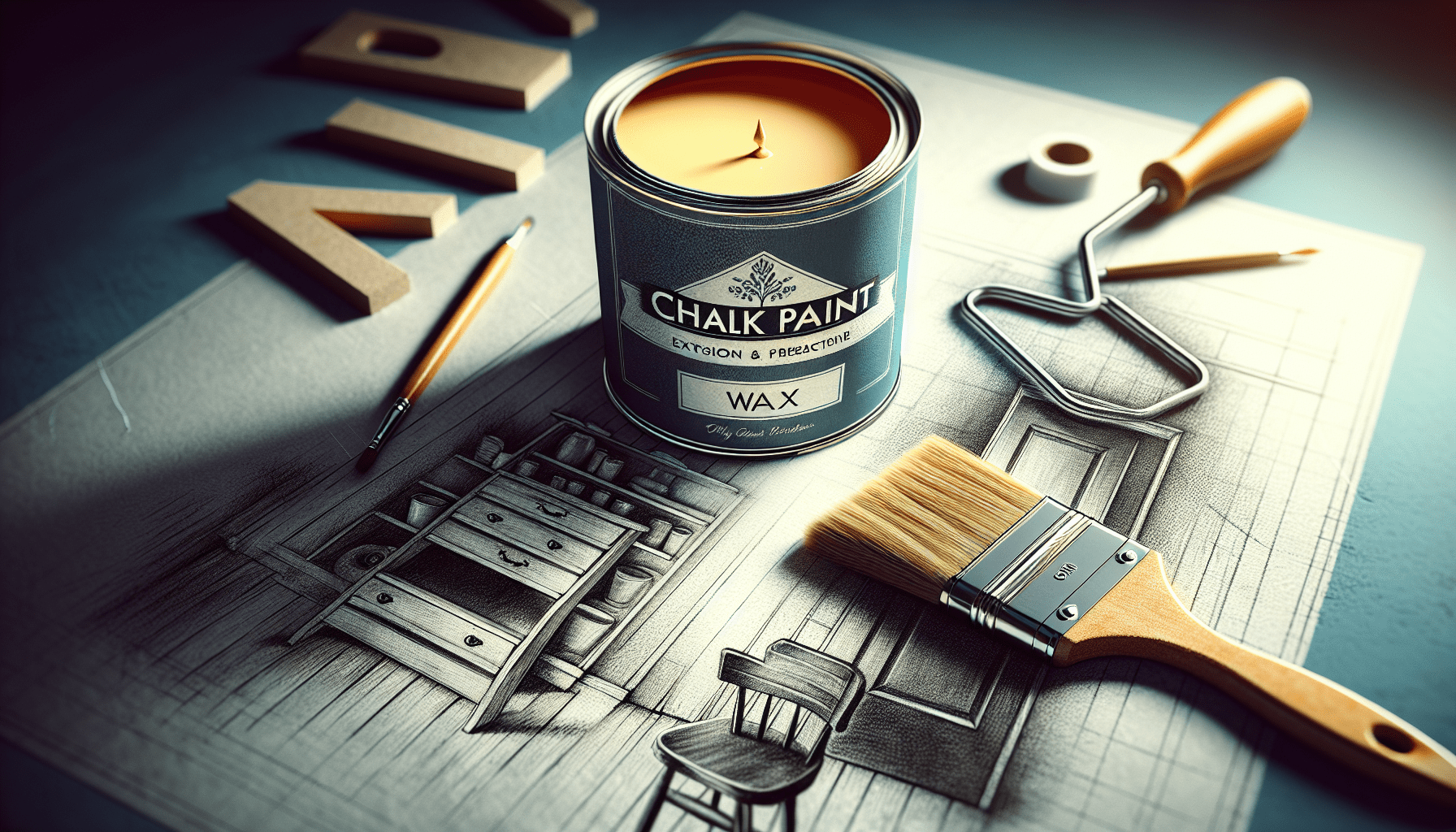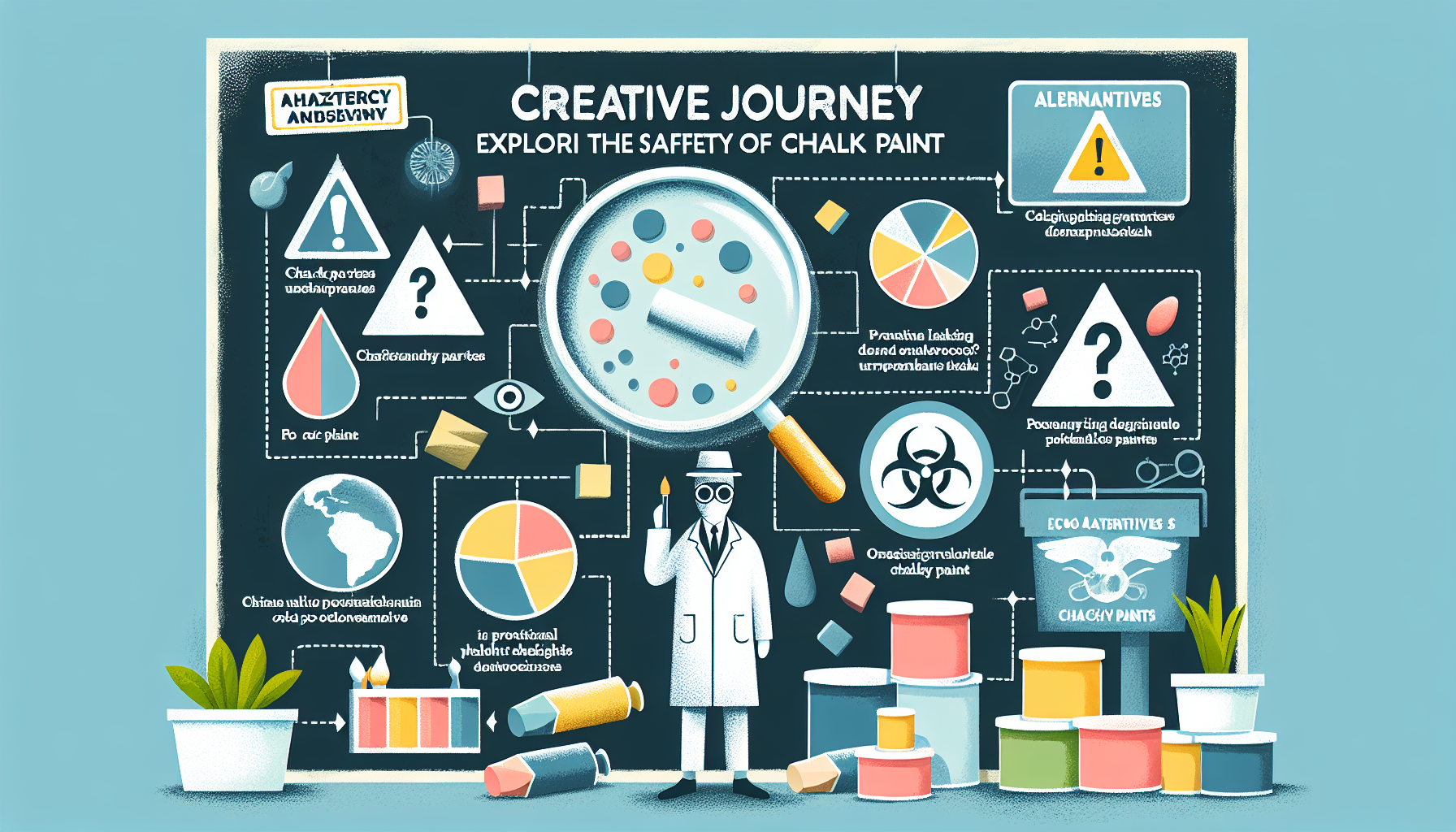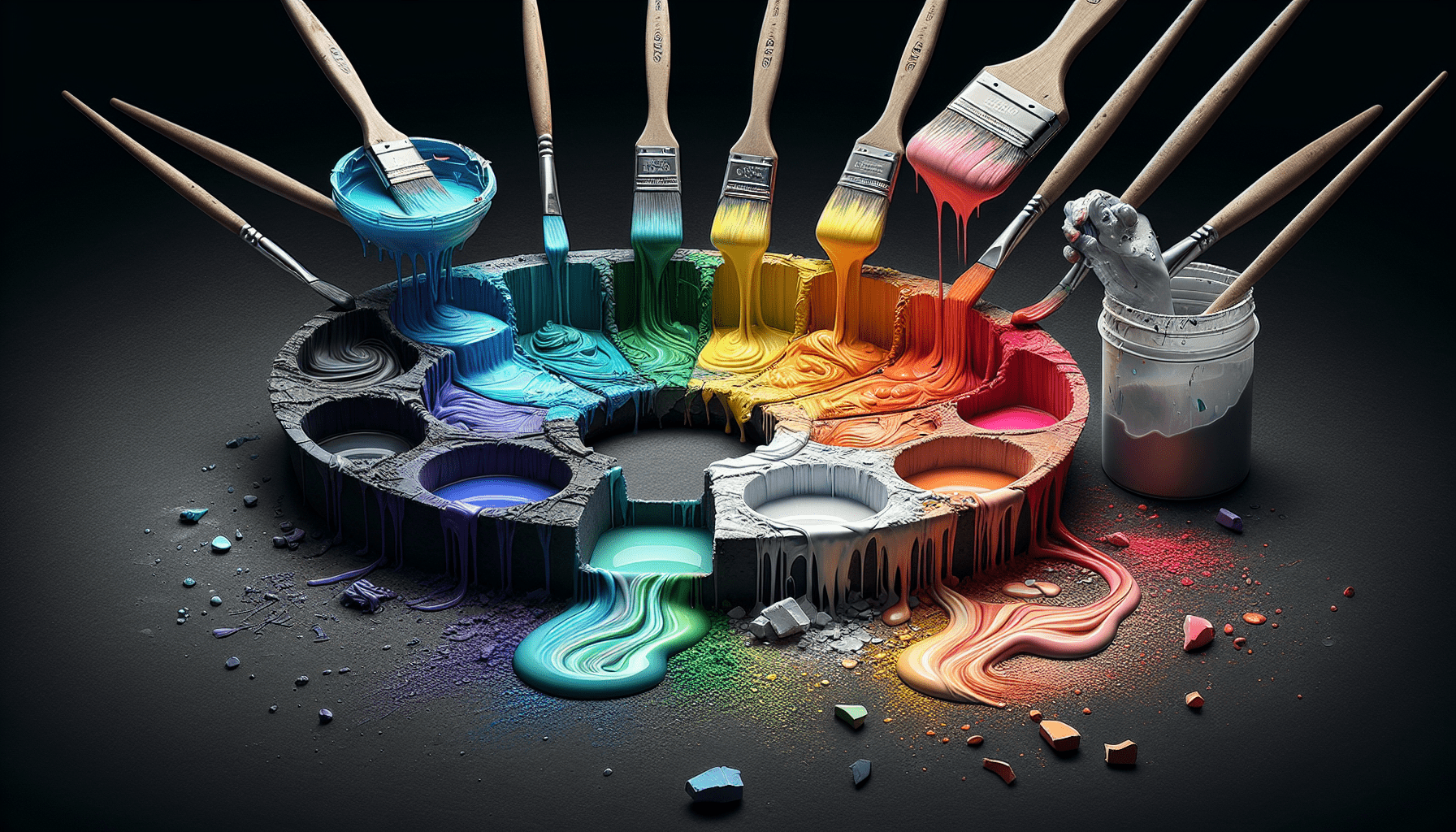Glass surfaces can add a touch of elegance and sophistication to any space. However, if you’re looking to transform the appearance of your glass objects, you may wonder if it’s possible to use chalk paint on them. Whether it be jars, vases, or even mirrors, the question remains – can you effectively paint glass with chalk paint? In this article, we will explore this common query and provide you with the essential information you need to know about using chalk paint on glass surfaces. Discover the tips, techniques, and potential challenges involved in achieving a beautiful and lasting finish on your glass objects using this popular type of paint.
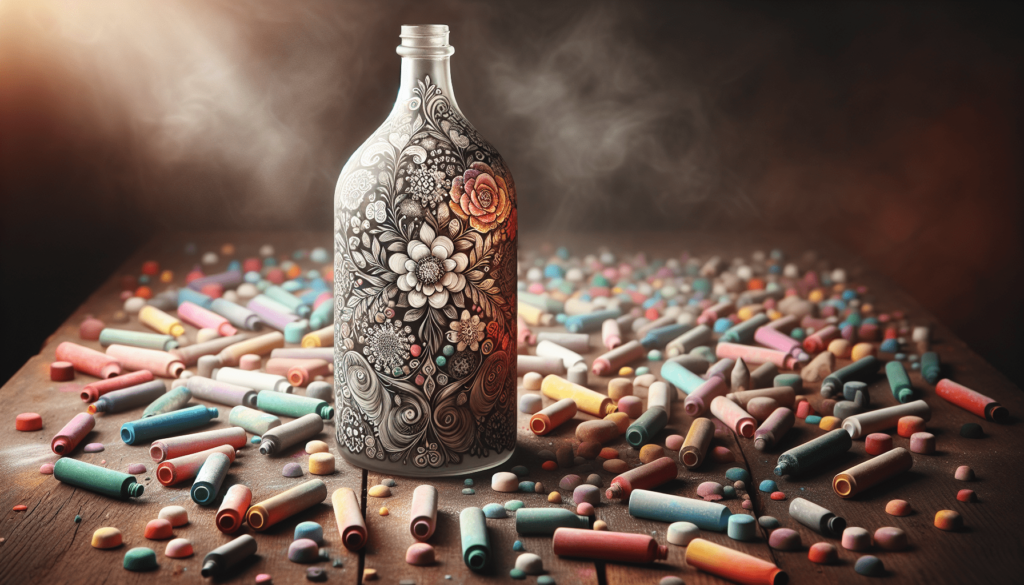
What is Chalk Paint?
Chalk paint is a type of paint that has gained popularity for its ability to create a matte, vintage-inspired finish on various surfaces. Originally developed by Annie Sloan, a decorative paint expert, chalk paint has unique properties that make it ideal for transforming furniture, walls, and even glass.
Definition of Chalk Paint
Chalk paint is a water-based paint that contains binders, pigments, and a chalky additive. Its distinct composition gives it a velvety, powdery texture and a flat, soft finish. Unlike traditional paints, chalk paint requires minimal preparation and can adhere to almost any surface with ease.
Composition and Features
The composition of chalk paint sets it apart from other types of paint. It typically consists of the following components:
- Binders: Chalk paint contains water-soluble, non-toxic binders such as latex or acrylic, which help the pigments adhere to surfaces.
- Pigments: The pigments in chalk paint are finely ground, resulting in rich, vibrant colors.
- Chalky Additive: The addition of a chalky substance provides the distinctive matte finish that chalk paint is known for.
One of the main advantages of chalk paint is its excellent coverage. It often requires fewer coats compared to traditional paints, making it a cost-effective choice. Chalk paint also dries quickly and has low odor, making it convenient to use in both indoor and outdoor settings.
Painting Glass with Chalk Paint
While chalk paint is commonly used on furniture and walls, it can also be successfully applied to glass surfaces. By following the correct techniques and using the right type of chalk paint, you can achieve a beautiful and durable finish on glass objects. Here are the key steps involved in painting glass with chalk paint:
Preparing the Glass Surface
Before applying chalk paint to glass, it is essential to ensure that the surface is clean and free from any debris or oils that may affect the paint’s adhesion. Use a gentle glass cleaner and lint-free cloth to thoroughly clean the glass.
Choosing the Right Type of Chalk Paint
There are various types of chalk paint available, and selecting the suitable one for glass surfaces will ensure optimal results. The three primary types of chalk paint to consider are:
-
Water-Based Chalk Paint: Water-based chalk paint is versatile and adheres well to glass surfaces. It is available in a wide range of colors and finishes. Make sure to choose a water-based chalk paint specifically formulated for use on glass.
-
Oil-Based Chalk Paint: Oil-based chalk paint provides a durable and long-lasting finish on glass. It is ideal for high-traffic areas or items that require increased durability.
-
Specialized Glass Chalk Paint: Some brands offer specialized chalk paint formulations designed explicitly for glass surfaces. These paints often come with enhanced adhesion and durability properties.
Applying Chalk Paint to Glass
Once you have prepared the glass surface and selected the appropriate type of chalk paint, it’s time to apply the paint. There are several techniques you can use when painting glass with chalk paint:
-
Brushing Technique: Use a high-quality brush and apply the chalk paint in smooth, even strokes. Take care to avoid visible brush marks and strive for an even coverage.
-
Spray Painting Technique: If you prefer a more even and professional finish, consider using a paint sprayer specifically designed for chalk paint. This technique can help achieve a seamless application on glass surfaces.
-
Roller or Sponge Technique: Using a foam roller or sponge can create a unique texture and finish on the glass. Experiment with different patterns and techniques to achieve the desired effect.
Tips for Achieving a Smooth Finish
To ensure a smooth and flawless finish when painting glass with chalk paint, consider the following tips:
-
Avoiding Brush Marks: Apply the chalk paint in thin, even layers to minimize brush marks. It’s better to apply multiple thin coats than one thick coat.
-
Minimizing Drips and Pooling: Be mindful of excessive paint application that may lead to drips or pooling. Remove any excess paint with a clean brush or cloth to maintain an even finish.
-
Sand Between Coats: For an ultra-smooth finish, lightly sand the glass surface between coats using fine-grit sandpaper. This will remove any imperfections and allow each coat to adhere better.
-
Using a Sealer or Topcoat: After the chalk paint has fully dried, consider applying a sealer or topcoat to protect the painted glass surface from scratches, moisture, and UV damage. This step can enhance the longevity and durability of the finished piece.
Enhancing Durability and Protection
To maximize the durability and longevity of your painted glass object, consider the following factors:
-
Curing Time: Chalk paint typically requires a curing time of at least 24 hours before it fully hardens. Avoid using or handling the painted glass during this curing period.
-
Curing Temperature: Chalk paint cures best in a stable and moderate temperature environment. Avoid exposing the freshly painted glass to extreme heat or cold during the curing process, as it may affect the paint’s adhesion.
-
Avoiding Excessive Moisture: While chalk paint is generally water-resistant, prolonged exposure to excessive moisture may affect its durability. Avoid placing painted glass objects directly under running water or in high-humidity areas.
-
Cleaning and Maintenance: To clean painted glass surfaces, use a soft cloth or sponge and mild soap. Avoid using abrasive cleaners or scrub brushes that may damage the surface. Regular maintenance and gentle cleaning will help preserve the appearance and finish of the painted glass.
Limitations and Considerations
While chalk paint can be successfully applied to glass surfaces, there are certain limitations and considerations to bear in mind:
Adhesion on Glass
While chalk paint generally adheres well to glass, it may be necessary to prepare the glass surface adequately for optimal adhesion. Cleaning and, if desired, sanding or etching the glass can help create a rougher surface that promotes paint adhesion.
Transparency and Coverage
Chalk paint tends to have a less transparent finish than other glass paints, which may affect the level of coverage achieved. Depending on the desired result, you may need to apply additional coats of chalk paint to achieve the desired opacity.
Temperature and Sunlight Exposure
Extreme temperature fluctuations and prolonged exposure to direct sunlight may affect the longevity of chalk paint on glass surfaces. Consider the location and intended use of the painted glass object to ensure it is not exposed to extreme conditions.
Longevity and Wear
While chalk paint can provide a beautiful finish on glass, it may not be as durable as specialized glass paints or enamels. Glass objects that undergo frequent handling or come into contact with abrasive surfaces may experience wear and chipping over time. Consider these factors when deciding on the suitability of chalk paint for your project.
Glass Paint Alternatives
If chalk paint is not the ideal option for your glass painting project, there are alternative types of glass paint to consider:
Glass Stains
Glass stains are specifically formulated for painting on glass surfaces. They allow for greater transparency and can create vibrant and luminous effects. Glass stains require heat-setting or baking to achieve durability and make the paint permanent on the glass.
Glass Enamels
Glass enamels provide excellent adhesion, durability, and coverage on glass surfaces. They are designed for use specifically on glass and can withstand high-heat applications, making them suitable for items like glassware or oven-safe dishes. Glass enamels often require curing in an oven to achieve optimal results.
Glass Markers
Glass markers offer a convenient and versatile way to paint on glass surfaces. They come in various colors, produce fine lines, and can be easily erased or removed if desired. Glass markers are ideal for temporary or decorative designs on glass. However, they may not provide the same longevity as other types of glass paint.
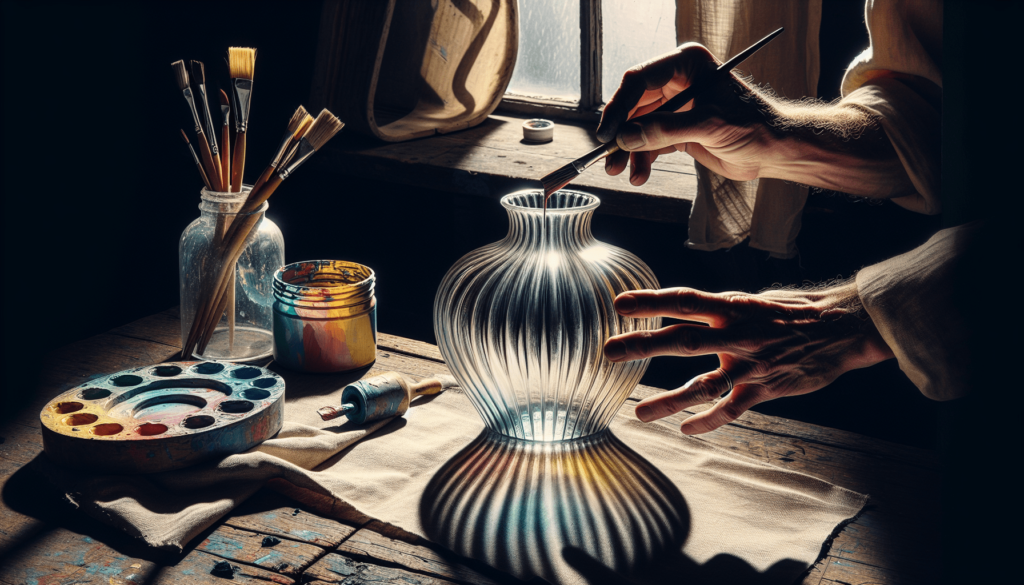
Inspiration and Ideas
Now that you have a better understanding of how to paint glass with chalk paint, consider the following inspiration and ideas for your own projects:
Chalk-Painted Glass Vases
Transform plain glass vases into unique and eye-catching centerpieces by painting them with chalk paint. Experiment with different colors and techniques to achieve a vintage, shabby-chic, or modern look.
Chalk-Painted Glass Jars
Give old glass jars a new lease on life by applying chalk paint. These painted jars can serve as stylish storage containers, candle holders, or decorative accents in any room.
Chalk-Painted Glass Ornaments
Create personalized and whimsical ornaments by painting transparent glass ornaments with chalk paint. Add details and designs using brushes or stencils to make each ornament unique.
Chalkboard Glassware
For a fun and interactive twist, paint the base or a portion of glassware with chalk paint to create a chalkboard-like surface. Guests can then write personalized messages or labels directly on the glassware with chalk.
In conclusion, painting glass with chalk paint is a creative and versatile way to transform plain glass into beautiful, customized pieces. By following the proper techniques and using the right type of chalk paint, you can achieve a smooth, matte finish that adds a touch of elegance to any glass object. With a myriad of colors and techniques to explore, let your imagination run wild and enjoy the process of creating unique painted glass creations.
